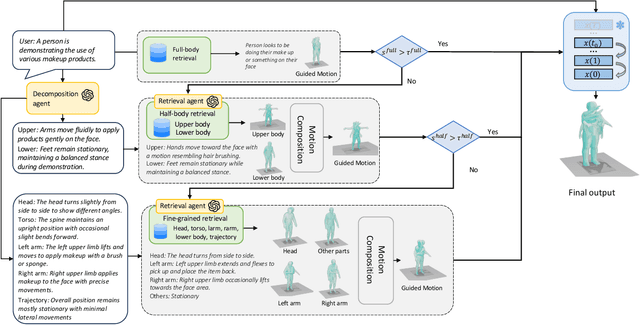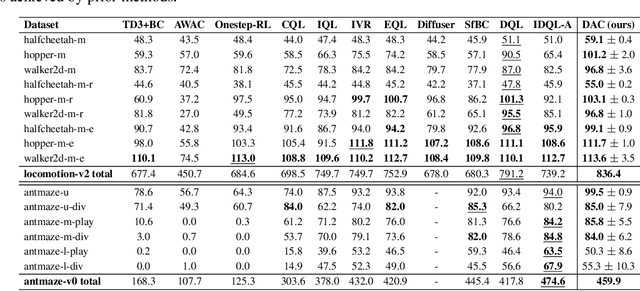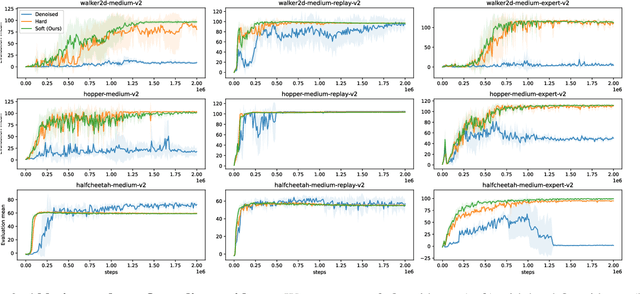Wenjia Wang
KP-PINNs: Kernel Packet Accelerated Physics Informed Neural Networks
Jun 11, 2025Abstract:Differential equations are involved in modeling many engineering problems. Many efforts have been devoted to solving differential equations. Due to the flexibility of neural networks, Physics Informed Neural Networks (PINNs) have recently been proposed to solve complex differential equations and have demonstrated superior performance in many applications. While the L2 loss function is usually a default choice in PINNs, it has been shown that the corresponding numerical solution is incorrect and unstable for some complex equations. In this work, we propose a new PINNs framework named Kernel Packet accelerated PINNs (KP-PINNs), which gives a new expression of the loss function using the reproducing kernel Hilbert space (RKHS) norm and uses the Kernel Packet (KP) method to accelerate the computation. Theoretical results show that KP-PINNs can be stable across various differential equations. Numerical experiments illustrate that KP-PINNs can solve differential equations effectively and efficiently. This framework provides a promising direction for improving the stability and accuracy of PINNs-based solvers in scientific computing.
TokenHSI: Unified Synthesis of Physical Human-Scene Interactions through Task Tokenization
Mar 25, 2025Abstract:Synthesizing diverse and physically plausible Human-Scene Interactions (HSI) is pivotal for both computer animation and embodied AI. Despite encouraging progress, current methods mainly focus on developing separate controllers, each specialized for a specific interaction task. This significantly hinders the ability to tackle a wide variety of challenging HSI tasks that require the integration of multiple skills, e.g., sitting down while carrying an object. To address this issue, we present TokenHSI, a single, unified transformer-based policy capable of multi-skill unification and flexible adaptation. The key insight is to model the humanoid proprioception as a separate shared token and combine it with distinct task tokens via a masking mechanism. Such a unified policy enables effective knowledge sharing across skills, thereby facilitating the multi-task training. Moreover, our policy architecture supports variable length inputs, enabling flexible adaptation of learned skills to new scenarios. By training additional task tokenizers, we can not only modify the geometries of interaction targets but also coordinate multiple skills to address complex tasks. The experiments demonstrate that our approach can significantly improve versatility, adaptability, and extensibility in various HSI tasks. Website: https://liangpan99.github.io/TokenHSI/
Zero-Shot Human-Object Interaction Synthesis with Multimodal Priors
Mar 25, 2025Abstract:Human-object interaction (HOI) synthesis is important for various applications, ranging from virtual reality to robotics. However, acquiring 3D HOI data is challenging due to its complexity and high cost, limiting existing methods to the narrow diversity of object types and interaction patterns in training datasets. This paper proposes a novel zero-shot HOI synthesis framework without relying on end-to-end training on currently limited 3D HOI datasets. The core idea of our method lies in leveraging extensive HOI knowledge from pre-trained Multimodal Models. Given a text description, our system first obtains temporally consistent 2D HOI image sequences using image or video generation models, which are then uplifted to 3D HOI milestones of human and object poses. We employ pre-trained human pose estimation models to extract human poses and introduce a generalizable category-level 6-DoF estimation method to obtain the object poses from 2D HOI images. Our estimation method is adaptive to various object templates obtained from text-to-3D models or online retrieval. A physics-based tracking of the 3D HOI kinematic milestone is further applied to refine both body motions and object poses, yielding more physically plausible HOI generation results. The experimental results demonstrate that our method is capable of generating open-vocabulary HOIs with physical realism and semantic diversity.
Beyond Non-Degeneracy: Revisiting Certainty Equivalent Heuristic for Online Linear Programming
Jan 03, 2025


Abstract:The Certainty Equivalent heuristic (CE) is a widely-used algorithm for various dynamic resource allocation problems in OR and OM. Despite its popularity, existing theoretical guarantees of CE are limited to settings satisfying restrictive fluid regularity conditions, particularly, the non-degeneracy conditions, under the widely held belief that the violation of such conditions leads to performance deterioration and necessitates algorithmic innovation beyond CE. In this work, we conduct a refined performance analysis of CE within the general framework of online linear programming. We show that CE achieves uniformly near-optimal regret (up to a polylogarithmic factor in $T$) under only mild assumptions on the underlying distribution, without relying on any fluid regularity conditions. Our result implies that, contrary to prior belief, CE effectively beats the curse of degeneracy for a wide range of problem instances with continuous conditional reward distributions, highlighting the distinction of the problem's structure between discrete and non-discrete settings. Our explicit regret bound interpolates between the mild $(\log T)^2$ regime and the worst-case $\sqrt{T}$ regime with a parameter $\beta$ quantifying the minimal rate of probability accumulation of the conditional reward distributions, generalizing prior findings in the multisecretary setting. To achieve these results, we develop novel algorithmic analytical techniques. Drawing tools from the empirical processes theory, we establish strong concentration analysis of the solutions to random linear programs, leading to improved regret analysis under significantly relaxed assumptions. These techniques may find potential applications in broader online decision-making contexts.
RMD: A Simple Baseline for More General Human Motion Generation via Training-free Retrieval-Augmented Motion Diffuse
Dec 05, 2024



Abstract:While motion generation has made substantial progress, its practical application remains constrained by dataset diversity and scale, limiting its ability to handle out-of-distribution scenarios. To address this, we propose a simple and effective baseline, RMD, which enhances the generalization of motion generation through retrieval-augmented techniques. Unlike previous retrieval-based methods, RMD requires no additional training and offers three key advantages: (1) the external retrieval database can be flexibly replaced; (2) body parts from the motion database can be reused, with an LLM facilitating splitting and recombination; and (3) a pre-trained motion diffusion model serves as a prior to improve the quality of motions obtained through retrieval and direct combination. Without any training, RMD achieves state-of-the-art performance, with notable advantages on out-of-distribution data.
SIMS: Simulating Human-Scene Interactions with Real World Script Planning
Nov 29, 2024Abstract:Simulating long-term human-scene interaction is a challenging yet fascinating task. Previous works have not effectively addressed the generation of long-term human scene interactions with detailed narratives for physics-based animation. This paper introduces a novel framework for the planning and controlling of long-horizon physical plausible human-scene interaction. On the one hand, films and shows with stylish human locomotions or interactions with scenes are abundantly available on the internet, providing a rich source of data for script planning. On the other hand, Large Language Models (LLMs) can understand and generate logical storylines. This motivates us to marry the two by using an LLM-based pipeline to extract scripts from videos, and then employ LLMs to imitate and create new scripts, capturing complex, time-series human behaviors and interactions with environments. By leveraging this, we utilize a dual-aware policy that achieves both language comprehension and scene understanding to guide character motions within contextual and spatial constraints. To facilitate training and evaluation, we contribute a comprehensive planning dataset containing diverse motion sequences extracted from real-world videos and expand them with large language models. We also collect and re-annotate motion clips from existing kinematic datasets to enable our policy learn diverse skills. Extensive experiments demonstrate the effectiveness of our framework in versatile task execution and its generalization ability to various scenarios, showing remarkably enhanced performance compared with existing methods. Our code and data will be publicly available soon.
Q-Distribution guided Q-learning for offline reinforcement learning: Uncertainty penalized Q-value via consistency model
Oct 27, 2024



Abstract:``Distribution shift'' is the main obstacle to the success of offline reinforcement learning. A learning policy may take actions beyond the behavior policy's knowledge, referred to as Out-of-Distribution (OOD) actions. The Q-values for these OOD actions can be easily overestimated. As a result, the learning policy is biased by using incorrect Q-value estimates. One common approach to avoid Q-value overestimation is to make a pessimistic adjustment. Our key idea is to penalize the Q-values of OOD actions associated with high uncertainty. In this work, we propose Q-Distribution Guided Q-Learning (QDQ), which applies a pessimistic adjustment to Q-values in OOD regions based on uncertainty estimation. This uncertainty measure relies on the conditional Q-value distribution, learned through a high-fidelity and efficient consistency model. Additionally, to prevent overly conservative estimates, we introduce an uncertainty-aware optimization objective for updating the Q-value function. The proposed QDQ demonstrates solid theoretical guarantees for the accuracy of Q-value distribution learning and uncertainty measurement, as well as the performance of the learning policy. QDQ consistently shows strong performance on the D4RL benchmark and achieves significant improvements across many tasks.
Automated Road Extraction from Satellite Imagery Integrating Dense Depthwise Dilated Separable Spatial Pyramid Pooling with DeepLabV3+
Oct 18, 2024Abstract:Road Extraction is a sub-domain of Remote Sensing applications; it is a subject of extensive and ongoing research. The procedure of automatically extracting roads from satellite imagery encounters significant challenges due to the multi-scale and diverse structures of roads; improvement in this field is needed. The DeepLab series, known for its proficiency in semantic segmentation due to its efficiency in interpreting multi-scale objects' features, addresses some of these challenges caused by the varying nature of roads. The present work proposes the utilization of DeepLabV3+, the latest version of the DeepLab series, by introducing an innovative Dense Depthwise Dilated Separable Spatial Pyramid Pooling (DenseDDSSPP) module and integrating it in place of the conventional Atrous Spatial Pyramid Pooling (ASPP) module. This modification enhances the extraction of complex road structures from satellite images. This study hypothesizes that the integration of DenseDDSSPP, combined with an appropriately selected backbone network and a Squeeze-and-Excitation block, will generate an efficient dense feature map by focusing on relevant features, leading to more precise and accurate road extraction from Remote Sensing images. The results section presents a comparison of our model's performance against state-of-the-art models, demonstrating better results that highlight the effectiveness and success of the proposed approach.
TSI-Bench: Benchmarking Time Series Imputation
Jun 18, 2024Abstract:Effective imputation is a crucial preprocessing step for time series analysis. Despite the development of numerous deep learning algorithms for time series imputation, the community lacks standardized and comprehensive benchmark platforms to effectively evaluate imputation performance across different settings. Moreover, although many deep learning forecasting algorithms have demonstrated excellent performance, whether their modeling achievements can be transferred to time series imputation tasks remains unexplored. To bridge these gaps, we develop TSI-Bench, the first (to our knowledge) comprehensive benchmark suite for time series imputation utilizing deep learning techniques. The TSI-Bench pipeline standardizes experimental settings to enable fair evaluation of imputation algorithms and identification of meaningful insights into the influence of domain-appropriate missingness ratios and patterns on model performance. Furthermore, TSI-Bench innovatively provides a systematic paradigm to tailor time series forecasting algorithms for imputation purposes. Our extensive study across 34,804 experiments, 28 algorithms, and 8 datasets with diverse missingness scenarios demonstrates TSI-Bench's effectiveness in diverse downstream tasks and potential to unlock future directions in time series imputation research and analysis. The source code and experiment logs are available at https://github.com/WenjieDu/AwesomeImputation.
Diffusion Actor-Critic: Formulating Constrained Policy Iteration as Diffusion Noise Regression for Offline Reinforcement Learning
May 31, 2024



Abstract:In offline reinforcement learning (RL), it is necessary to manage out-of-distribution actions to prevent overestimation of value functions. Policy-regularized methods address this problem by constraining the target policy to stay close to the behavior policy. Although several approaches suggest representing the behavior policy as an expressive diffusion model to boost performance, it remains unclear how to regularize the target policy given a diffusion-modeled behavior sampler. In this paper, we propose Diffusion Actor-Critic (DAC) that formulates the Kullback-Leibler (KL) constraint policy iteration as a diffusion noise regression problem, enabling direct representation of target policies as diffusion models. Our approach follows the actor-critic learning paradigm that we alternatively train a diffusion-modeled target policy and a critic network. The actor training loss includes a soft Q-guidance term from the Q-gradient. The soft Q-guidance grounds on the theoretical solution of the KL constraint policy iteration, which prevents the learned policy from taking out-of-distribution actions. For critic training, we train a Q-ensemble to stabilize the estimation of Q-gradient. Additionally, DAC employs lower confidence bound (LCB) to address the overestimation and underestimation of value targets due to function approximation error. Our approach is evaluated on the D4RL benchmarks and outperforms the state-of-the-art in almost all environments. Code is available at \href{https://github.com/Fang-Lin93/DAC}{\texttt{github.com/Fang-Lin93/DAC}}.
 Add to Chrome
Add to Chrome Add to Firefox
Add to Firefox Add to Edge
Add to Edge